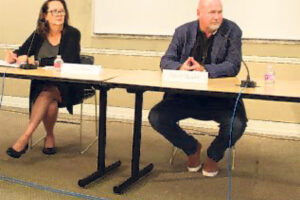Nearly one year after Camas-Washougal firefighters began calling for an increase in staffing levels at the local fire department, Camas City Council members have officially approved the hiring of two firefighters and one fire inspector in 2019.
The plan for two firefighters is half of what Camas city leaders had originally intended, and two city councilmembers — Greg Anderson and Deanna Rusch — said they still supported hiring four new firefighters and a fire inspector in 2019.
“I think we’re letting our citizens down by not … providing the level of services that we’ve heard they want,” Anderson said Monday, Jan. 7, at the council’s workshop.
The discrepancy between the council’s original plan — to hire four firefighters and a fire inspector — and the council’s majority decision on Monday to hire the fire inspector but only two firefighters stems from a disagreement with Washougal officials about that city’s role in funding the new positions.
Under the two cities’ shared fire department agreement, Camas pays about 60 percent of the fire department’s costs while Washougal foots 40 percent of the bill.


